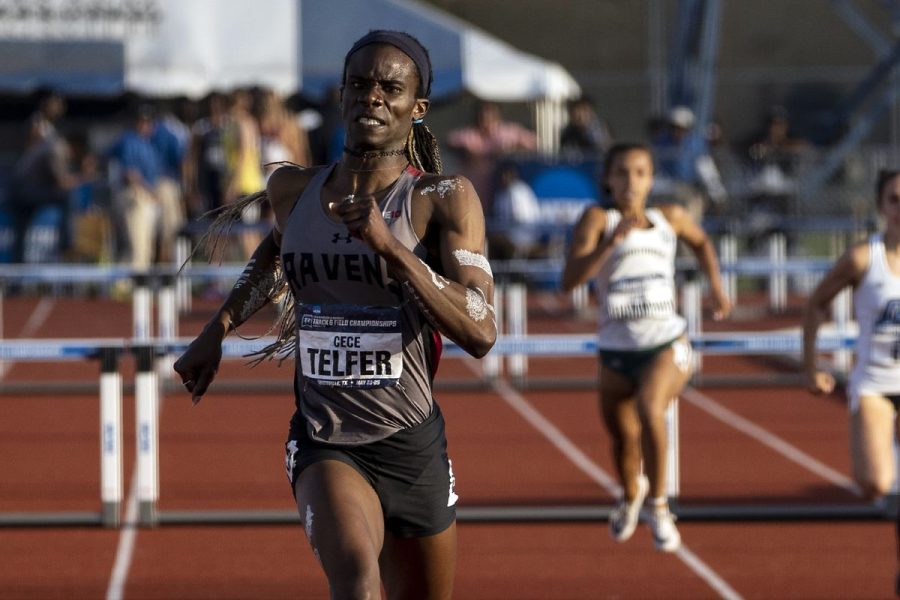Inclusion of Transgender Athletes
Sports have been a major contributor to American culture for hundreds of years. Many people find enjoyment, companionship, fulfillment, and purpose in athletics. In so many instances, the sport becomes a very important source of identity for the athlete. Participating in sports goes a long way in helping to grow character and integrity in each individual, while teaching important life lessons along the way. It gives participants a common goal to work toward, which binds them together, giving them a true sense of belonging. Being a part of a group where all members are valued for the talent, skill, and work that they contribute is a major component of all sports. The majority of athletes can attest to how they desire equal opportunity to compete in the sport they are passionate about. Although this is true, there is a conflict centered around whether transgender athletes should be allowed, and in many cases, are allowed to compete in the specific division they want to in sports. From basic social inclusion to biological advantage, this problem has many points of view that are contrary to each other. The topic pertaining to transgender athletes is very controversial and contains different points of view that possess forms of logic and reasoning that are meaningful to those involved.
Acknowledging that equality and opportunity for transgender athletes are important, there are also other disadvantages to allowing them to compete in the sports division they prefer or desire. Amongst taking testosterone suppressants and going through deprivation and administration operations, an argument has been made that the male biological characteristics still offer a competitive advantage. To quote Hanzhi Wang in the article, Fairness for Transgender Athletes in Sports Competition, the author said “In addition, except for the distinct difference in testosterone level, biological males have longer and larger bones, which gives them mechanical advantages over women, since they have greater leverage, increased height and larger frames to support muscle. For example, Laurel Hubbard was a transgender weightlifter who was born male, received massive criticism from the Chinese audience because he was transgender and had the strength of a biological male.” This article shows how even with taking testosterone suppression therapy, a biological male still has certain physical attributes that give him a natural competitive advantage. A New York Post article was written to describe the unfair advantage that the transgender male college swimmer, Lia Thomas, has over her competition. The 22-year-old, who competed with the Penn’s men’s swim team for three years before coming out as transgender in 2019, had already broken several Penn records. The author of the article quoted John Lohn, Swimming World editor-in-chief, when he said, “The fact is, for nearly 20 years, she built muscle and benefited from the testosterone naturally produced by her body. That strength does not disappear overnight, nor with a year’s worth of suppressants. The suppressants she has taken account for an approximate two to three percent change in time. The time difference between male and female swimming records is roughly eleven percent (Crane).” Even with the testosterone suppressants, she still broke multiple women’s swimming records in one year even after being in the men’s division for three years. Lia’s biological strength is still there even after she had undergone certain treatments. Irena Martínková, in her article, Transgender Athletes and Principles of Sport Categorization, mentions how “the sex category of sports has been overwritten to be based only on gender when it has always been based on sex throughout history.” Strict sex separation has been challenged ever since transgender athletes have been able to participate in the sub-category of their transition. The author of the article also explains how the creation of different loopholes that lead to the male and female sporting categories changes what sports have been built on throughout history. Including transgender people in the basic categories brings great confusion and complication to sports by making sure there aren’t any competitive advantages by performing tests and categorizing them.
Again, equality and fairness in sports are very important. The fairness and protection of athletes should be paramount when making policies for sports. If different categories are created appropriately, they will offer fairness and protection for all transgender and cisgender athletes. Hanzhi Wang in his article “Fairness for Transgender Athletes in Sports Competition” said, “In 2015, transgender MMA fighter Fallon Fox, born a man, gave his female opponent a concussion and broke her eye socket. Her opponent suffered a serious eye injury from a damaged orbital bone and needed seven staples after she fought Fox. This trauma could potentially destroy this lady’s career. In a nutshell, for protecting the fairness and the safety in the sports competition, discriminatory policies are unavoidable. This example focuses on the fact that allowing transgender athletes into their desired division could put the cisgender athletes in that division in danger. Biological males have natural advantages that could very much hurt their competition in more physical sports like boxing and mixed martial arts. Lia Thomas, in the New York Post article, is also accused of a form of doping. Doping is the use of illegal substances that enhance athletic performance. Although Lia didn’t take any drugs or different substances of any kind, she still enjoyed similar advantages by switching to the women’s division even though she was a biological male (Crane). This accusation proves, again that Lia holds a great advantage over her competition, similar to what effect doping has on people. Policies that enable unfairness put cisgender athletes in more than physical danger; it affects their mental health too. Having the opportunity to win taken away hurts athletes because of how competitive they are. Three general principles of Category Assessment can be proposed. The principles are fairness of category assessment (everyone should be addressed in the same way), verifiability (category assessment should be objectively verifiable and checkable), and practicability (category assessment should be practical and relatively simple) (Martínková). The first principle is focused on how complicated it would be to make categories based on experience and social identity, rather than focusing on the system in place regarding natural, physical and sexual attributes such as weight, sex, dis/ability, etc. The second principle is based on verifying that different athletes are truthful about their situations and personal testimonies. The third principle is about making the categories practical and simple. Having a multitude of categories isn’t very desirable because it just complicates things. In the end, the categories that make up sports should be meaningful, safe, and inclusive of all athletes.
In conclusion, different arguments can be made to support both sides of the issue. The sources mentioned agree on how it’s important to be inclusive of different people, but in doing so, the fairness of sports and different activities should also be preserved. The topic of transgender athletes and their inclusion in their preferred division is very complicated and controversial. It presents many different opinions that provide logical sources of reasoning. The NCAA, Olympics, and different professional sports organizations most likely have some controversy regarding this topic. There must be a healthy compromise between the inclusion of transgender athletes and keeping sports fair. Should transgender athletes be given equal opportunity at the expense of making sports unfair for cisgender athletes?
Buzuvis, Erin. “Including Transgender Athletes in Sex-Segregated Sport.” Edited by Western New England University School of Law. SSRN, edited by John Peters, 21 Sept. 2012, papers.ssrn.com/sol3/papers.cfm?abstract_id=2149799. Accessed 1 Feb. 2022.
Crane, Emily. “Penn Trans Swimmer Lia Thomas’ ‘Unfair Advantage’ Is Akin to Doping.” New York Post, edited by Keith Poole, Sean M Giancola, 20 Dec. 2021, nypost.com/2021/12/20/editor-says-penn-trans-swimmer-lia-thomas-unfair-advantage-is-akin-to-doping/. Accessed 2 Feb. 2022.
Griffin, Pat, and Hudson Taylor. Champions of Respect — Inclusion of LGBTQ Student-Athletes and Staff in NCAA Programs. Edited by Karen Morrison, Indianapolis, NCAA, 2012. NCAAPublications, www.ncaapublications.com/p-4305-champions-of-respect-inclusion-of-lgbtq-student-athletes-and-staff-in-ncaa-programs.aspx. Accessed 4 Feb. 2022.
Jones, B.A., Arcelus, J., Bouman, W.P. et al. Sport and Transgender People: A Systematic Review of the Literature Relating to Sport Participation and Competitive Sport Policies. Sports Med 47, 701–716 (2017). https://doi.org/10.1007/s40279-016-0621-y
Martínková, Irena, et al. Transgender Athletes and Principles of Sport Categorization: Why Genealogy and the Gendered Body Will Not Help. 16 Sept. 2021. Sport, Ethics and Philosophy. Taylor and Francis Online, https://doi.org/10.1080/17511321.2021.1974530. Accessed 9 Feb. 2022.
Wang, Hanzhi. “Fairness for Transgender Athletes in Sports Competition.” Atlantis Press, vols. Advances in Social Science, Education and Humanities Research, nos. Transgender Athlete Rights, 21 Oct. 2021. Abstract.
Hey my name is Ethan Johnson, and I'm currently a senior at Lewis Cass. I play baseball and tennis, and I pretty much enjoy watching any sport with a ball...












Cole McCloskey • Feb 7, 2023 at 11:42 am
I agree with your thoughts on this topic Ethan! I think transgender athletes should either compete in their born gender, or have a league of their own to compete in. Men competing in women’s sports will never be fair, no matter how many testosterone suppressants he may take. I look forward to your future writing Ethan.
L.J. Hillis • Feb 7, 2023 at 11:34 am
Nice article Ethan! I find those statistics very interesting about how the testosterone depressants only take away part of the male biological advantage. Keep up the good work!
Elijah Beard • Feb 7, 2023 at 11:25 am
Great article Ethan! I love how you included the body mass and body structure matters even if you take testosterone blocking hormones. I also like how you looked at the issue from both sides of the argument.